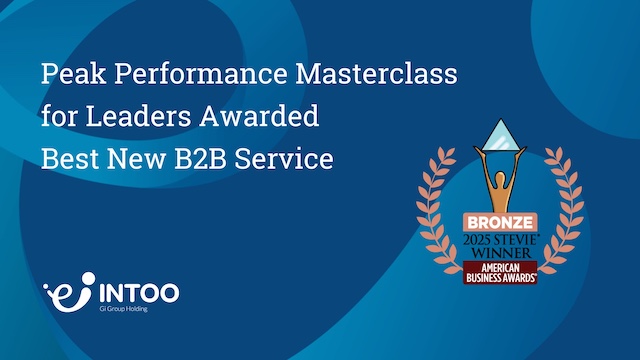Changing employment laws. Sudden layoffs and furloughs. New safety regulations. The coronavirus crisis has quickly transformed work as we know it, requiring HR professionals to adapt to new challenges on a weekly, sometimes even daily, basis. The pandemic has the HR community asking many new and pressing legal questions, with topics ranging from temperature checks to work-from-home accommodation requests.
To get answers for our HR community during this uncertain period, we spoke with Kayvan Iradjpanah, attorney and shareholder at labor and employment law firm Littler. Kayvan answered many timely questions about legal issues HR professionals are concerned about and should be keeping abreast of during this unprecedented crisis. More information is also available at Littler’s COVID-19 resource page.
Below is a condensed version of the Q&A, edited for clarity. Some of the questions answered include:
- What legal issues should employers keep in mind as they transition back to the workplace?
- Are there legal concerns with temperature checks employers should be aware of?
- Can the employer mandate a healthy employee to return to the workplace?
- How should employers handle requests from employees who request special accommodations?
- Are there legal ramifications to switching to a distributed workforce?
- What legal issues concerning workforce changes should employers be mindful of at this time?
- Are there new concerns surrounding furloughs and layoffs brought about by the crisis?
- What can employers do to address anti-Asian racist attacks in the workplace?
- Could there be legal ramifications to the different working conditions and expectations for at-home versus at-workplace employees?
- What is your top piece of legal advice for HR professionals at this time?
Bringing workers back to the workplace
Some states have begun to ease social distancing measures, and more workers are now returning to the workplace. What legal issues should employers keep in mind during this transition?
The return to work implicates virtually every area of labor and employment law, from workplace safety to wage and hour to leaves and accommodations. These issues naturally present challenges because employers are traversing uncharted waters and, by the day, there are new federal, state, and municipal laws governing employers in each locale. It is a lot to manage.
As an initial matter, I suggest that HR leaders map out a plan of action for keeping abreast of these quickly evolving legal requirements. Next, employers should look closely at all of the various safety-related rules (e.g. face coverings, temperature checks) governing their operations, namely to ensure that there is both legal compliance and an environment in which employees will be safe and comfortable.
From there, having a checklist of issues can be helpful. For instance, if some employees will have their salaries reduced, employers will need to ensure that they comply with applicable notice requirements or that the salaries of exempt employees meet the applicable salary thresholds. Similarly, employees with certain health conditions may be eligible for accommodation or leave entitlements under the employer’s policy or applicable law.
To go back to a point you mentioned: Should employers institute temperature checks for workers returning to work on-site? Are there privacy or safety-related legal concerns with such checks employers should be aware of?
As mentioned, this is a quickly evolving area of the law. Governors and public health officials across the country have implemented stringent measures to help contain the spread of COVID-19, such as stay at home or face covering orders. Some jurisdictions also require that employers conduct health screenings, and this can include temperature checks. The first step in assessing these obligations is to identify which rules apply, as there has been wide variation in some of the local orders. Littler, on a daily basis, is tracking statewide laws and orders that require employers to take temperatures and/or conduct other health screening procedures here. It is also important to ensure that any employees charged with conducting these screenings receive the requisite trainings.
As you suggested, there are undoubtedly privacy concerns in this area. Some states like California have comprehensive privacy laws like the California Consumer Protection Act (CCPA) which govern the use of private information. Similarly, the manner in which an employer conducts such screenings should be carefully assessed to maintain confidentiality.
Case in point, an employer who asks an employee about its medical conditions in front of other employees or customers can run afoul of these rules. Any procedures relating to health screening should be carefully assessed prior to implementation.
What if stay at home orders have been lifted in an employer’s jurisdiction, but employees still decline to come into work? Can the employer mandate a healthy employee to come into the workplace?
Many of my clients—particularly those in HR—have grown accustomed to hearing attorneys say, “it depends.” This refrain has become even more frequent in light of the patchwork of new laws, many of which are effective immediately and have yet to be sufficiently interpreted.
If an employee declines to come to work, the employer needs to conduct an individualized analysis to determine the reasons for that decision and the applicable law. It’s possible that this may give rise to an obligation to engage in the interactive process, or that certain leave-related obligations may be implicated.
With “motherhood penalty” lawsuits making headlines these days, how should employers handle requests from employees—whether they are coming into the workplace or working from home—who request accommodations such as reduced hours to help care for children or sick members of the household?
Employers should take these requests seriously and analyze them closely. A variety of laws may be applicable, such as the Americans with Disabilities Act, the Family Medical Leave Act, and the Families First Coronavirus Response Act, as well as similar state and local laws.
Many of these laws require employers to not only engage in the interactive process to determine if accommodations should be provided, but also may allow employees to take leave in these circumstances. These are undeniably challenging times for both employees and employers. Understanding legal obligations in each scenario are more important now than ever.
For employees continuing to work from home, are there legal ramifications to this switch to a distributed workforce companies should be keeping in mind?
Yes, there can be. Employers, and specifically managers, should provide clear direction on expectations during this era of remote work. For instance, non-exempt employees should continue to record their work time and to take breaks where required by law or company policy. Managers should adhere to work schedules and minimize the potential for off-the-clock work. Additionally, some states have, over time, more expansively interpreted their rules regarding the reimbursement of business-related expenses than others. Employers should assess whether these rules potentially give rise to additional reimbursement expenses.
Managing layoffs and furloughs
What legal issues concerning workforce changes should employers be mindful of at this time?
As an initial step, I suggest employers carefully review the criteria that has been used to determine which employees will be adversely impacted by actions such as salary reductions, furloughs, or terminations. Such decisions should be supported by legitimate business reasons and, likewise, the employer should review whether there are any disproportionate impacts on certain groups of the employee population.
With respect to pay reductions, many jurisdictions have notice periods governing how far in advance employees should be advised of changes to their pay. Pay reductions should also be reviewed to assess compliance with both the minimum salary thresholds for exempt employees and local minimum wage rules, among other rules.
Additionally, some jurisdictions have predictive schedule laws which govern the extent to which employers can unilaterally change employees’ schedules. Employers need to also be mindful of the Worker Adjustment and Retraining Notification Act (WARN) as well as a number of related state laws, which require mandatory notice in advance of certain reductions in force, location closures, pay reductions, or other personnel actions.
Another issue with which many employers are grappling is processing payroll and benefits when employees are furloughed or laid off. Many states have their own rules regarding final pay obligations and, likewise, have different interpretations regarding whether a furlough may constitute a “termination” that would trigger those obligations. Similarly, there isn’t a one size fits all approach to benefits. Employers much carefully review the terms of their employee benefit plans to ensure that they are in compliance.
The foregoing are some of the most frequent issues I’ve seen in the past two months, but it’s really the tip of the iceberg.
Are there new concerns surrounding furloughs and layoffs that have been brought about by the coronavirus crisis?
For better or worse, this is not the first period of time where our society has seen furloughs or layoffs on a large scale. However, COVID-19 introduces unique levels of uncertainty and new legal terrain. The “return to work” is the next major area that we are looking at, and Littler’s COVID-19 resource page has a lot of information that can be useful in that arena.
Addressing new societal concerns
Many reports of anti-Asian racist attacks have made the news since the coronavirus outbreak began. What can employers do to address these issues in the workplace, especially from a legal perspective?
A majority of employers are governed by workplace anti-discrimination laws like Title VII of the Civil Rights Act or the California Fair Employment and Housing Act, both of which prohibit workplace discrimination, harassment, and retaliation. Prejudiced attitudes have no place at work and employers have many tools available to them to maintain workplaces free of such behavior.
Employers should maintain up to date policies which not only establish that they are equal opportunity employers, but also address the different types of prohibited workplace conduct. Relatedly, these policies should describe to employees the different avenues available to raise concerns about such workplace conduct to the employer. Most employee handbooks have these types of policies, but they should be frequently reviewed, as this area of the law has also evolved. Some states like California have specific requirements governing the content of such policies.
This is also an opportunity for employers to offer additional trainings to employees, as already required in some jurisdictions like California. Good workplace trainings can help reinforce these corporate values as well as making sure employees know that they should feel comfortable raising such concerns.
The pandemic has especially affected blue collar, service, or low-wage workers, who have often been called into work during the pandemic, while many white collar and more affluent workers have been able to work in relative isolation from home. Could there be legal ramifications to these differences in working conditions and expectations that employers should be working to address?
This is a good question and relates back to many of the concepts we have already discussed. Employers have a legal duty to maintain safe workplaces. Essential workers, be they employees at a grocery store or physicians at a hospital, will necessarily find themselves in a much different work environment than those employees who are able to work from home. Naturally, the legal considerations will differ from group to group. Whereas HR may be most focused on maintaining legally-compliant workplace safety protocols for those employee who are physically present at the worksite, there could be a completely different set of issues related to employees who are teleworking. In my view, the most important thing is to recognize these differences and not apply a uniform approach as an employer.
What is your top piece of legal advice for HR professionals at this time?
Employment law, more so than many other areas of the law, is constantly evolving. At Littler, we have webinars on new legal developments on a near weekly basis. As many of these legal obligations are derived from statute, such rules frequently change. This is true now more than ever. My best advice to HR professionals is to take a targeted approach of identifying where their operations are located and ensuring they have correctly understood the legal obligations in those areas. From there, it is always important to ensure that personnel policies (e.g. employee handbooks) and personnel documents (e.g. onboarding documents) are up to date and modified to reflect the new work environments. Training, as always, continues to remain a cornerstone of legal compliance as well.
One tool that can be helpful is Littler’s COVID-19 resource page for employers. There is a wide array of FAQs, webinars white papers, and other resources available. We also have an email list to which you can subscribe for legal updates, webinar invitations, and other resources.
The responses to these questions are for informational purposes only, and are not intended to substitute for legal advice. Because the COVID-19 situation is dynamic, with new governmental measures each day, employers should consult with counsel for the latest developments and updated guidance on this topic.
The views expressed within this publication are those of the individual authors writing in their individual capacities only—not those of their respective employers. All liability with respect to actions taken or not taken based on the contents of this site are hereby expressly disclaimed. The content on this posting is provided “as is” and no representations are made that the content is error-free.











